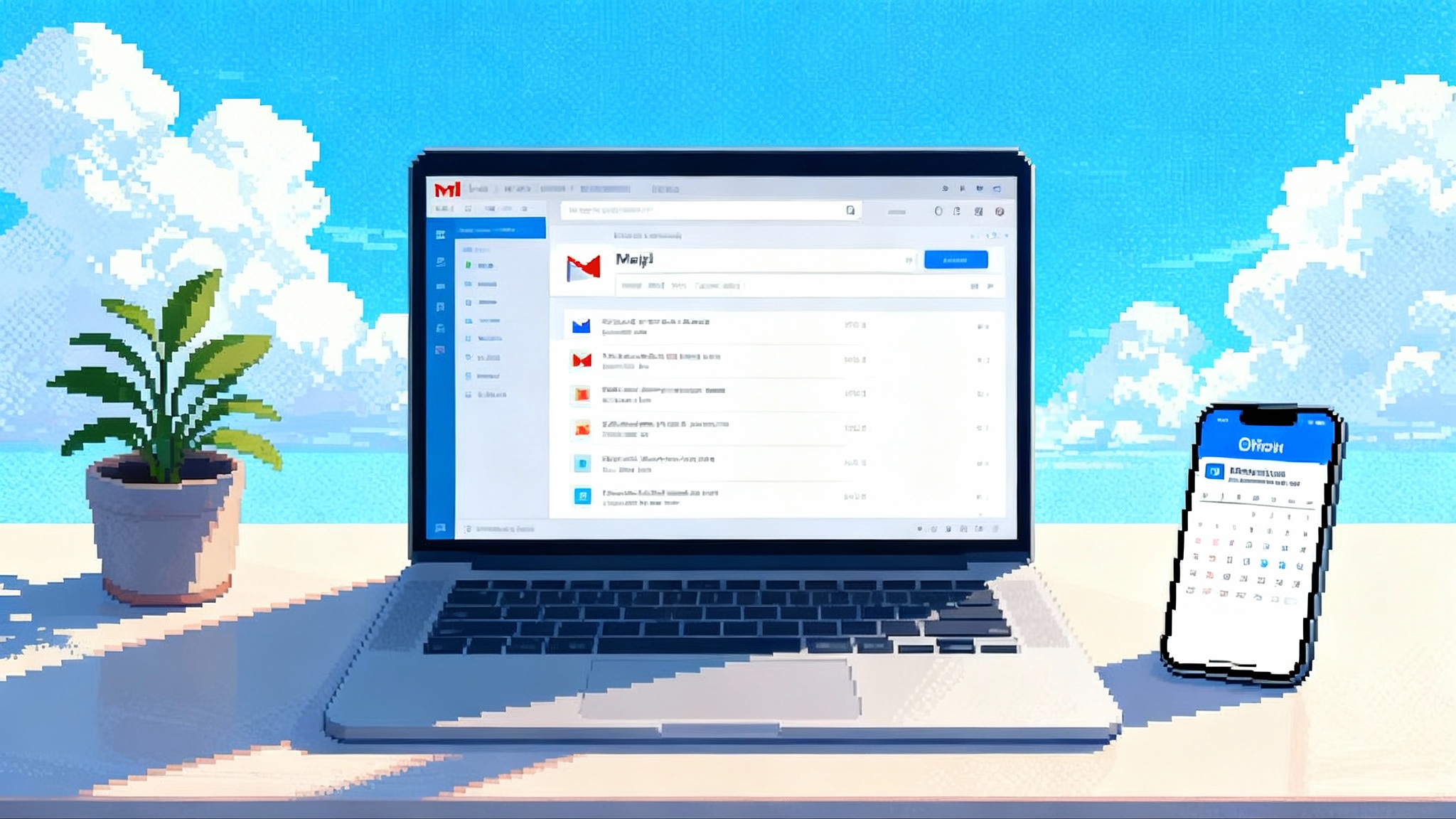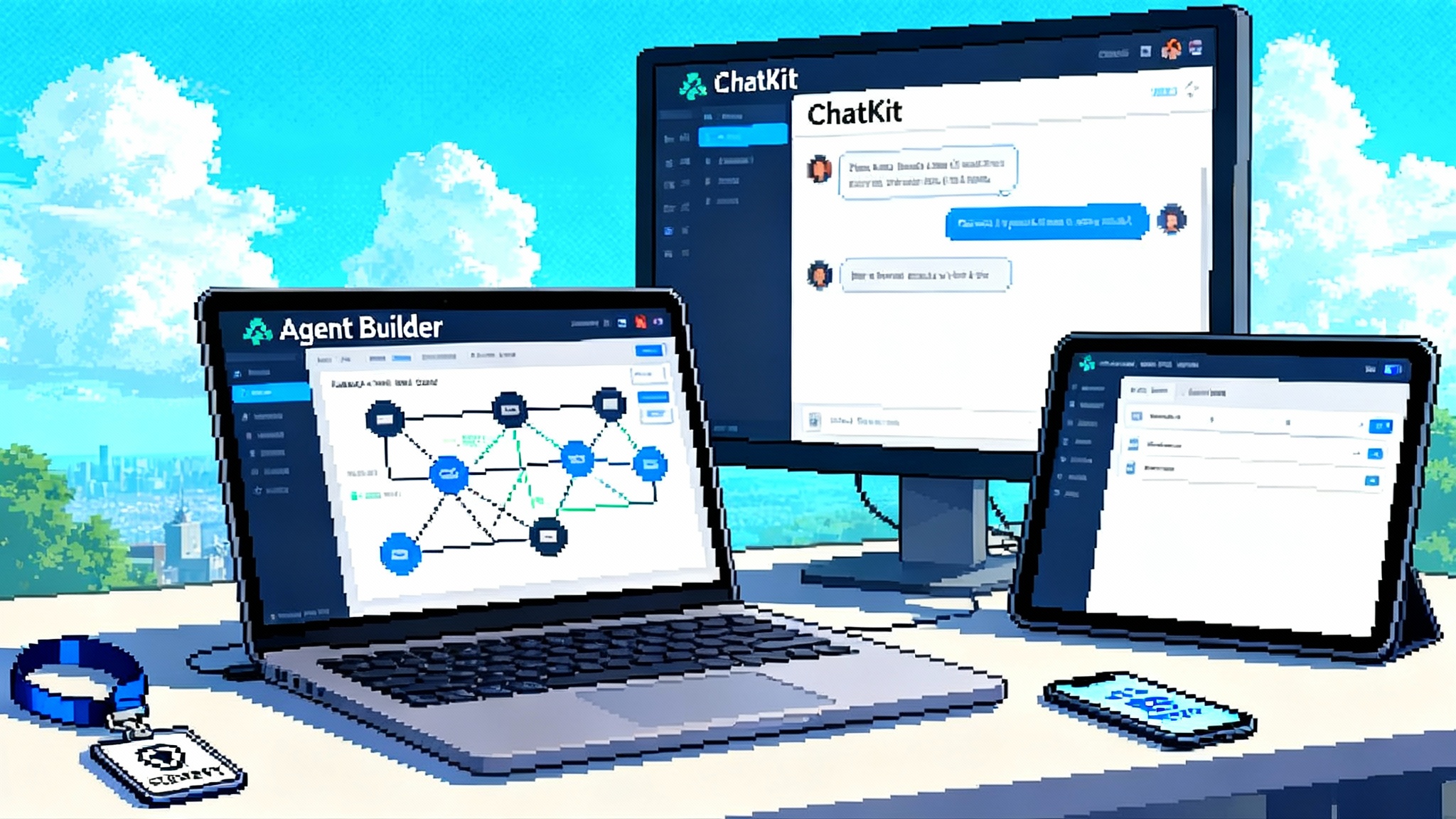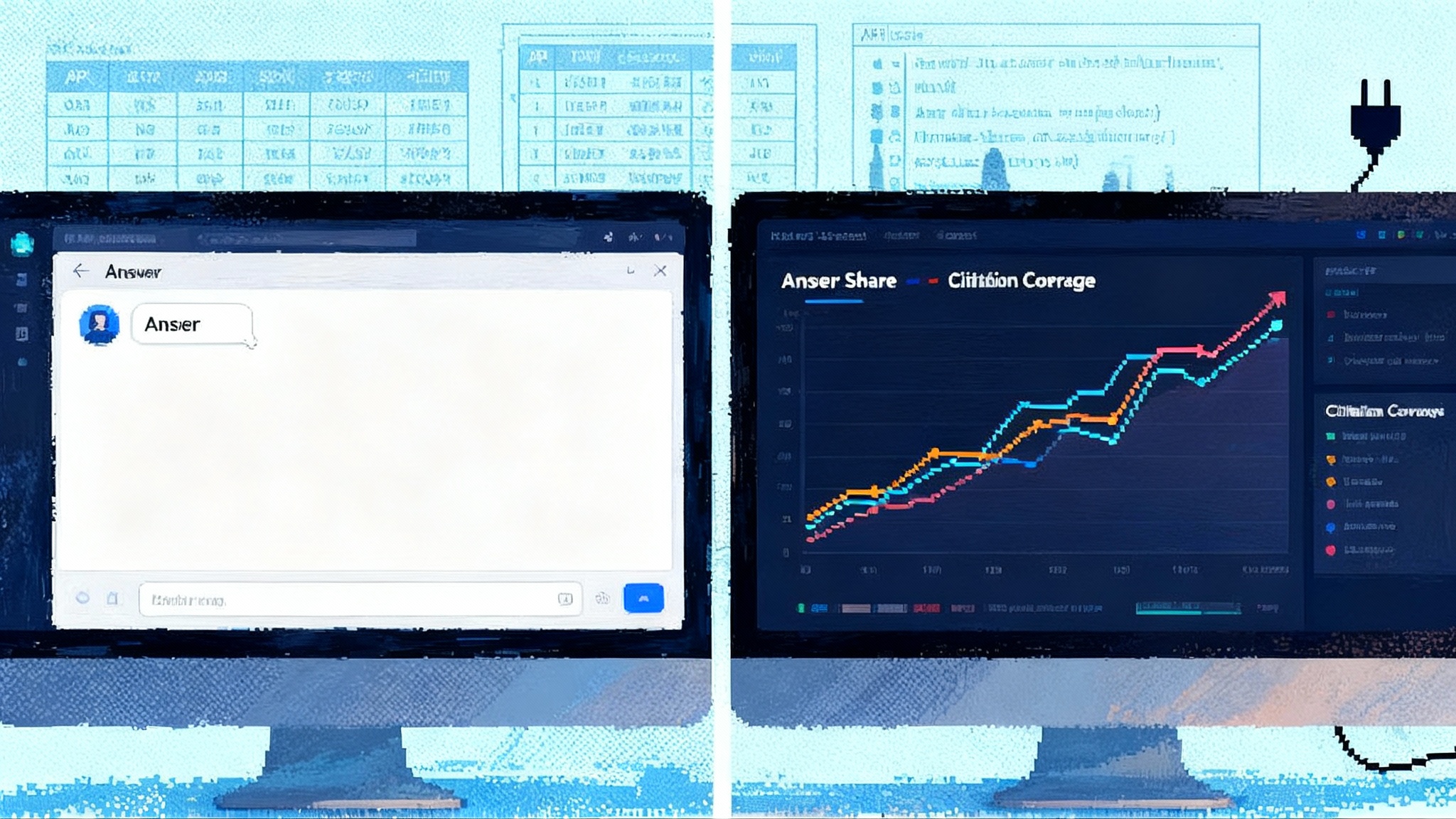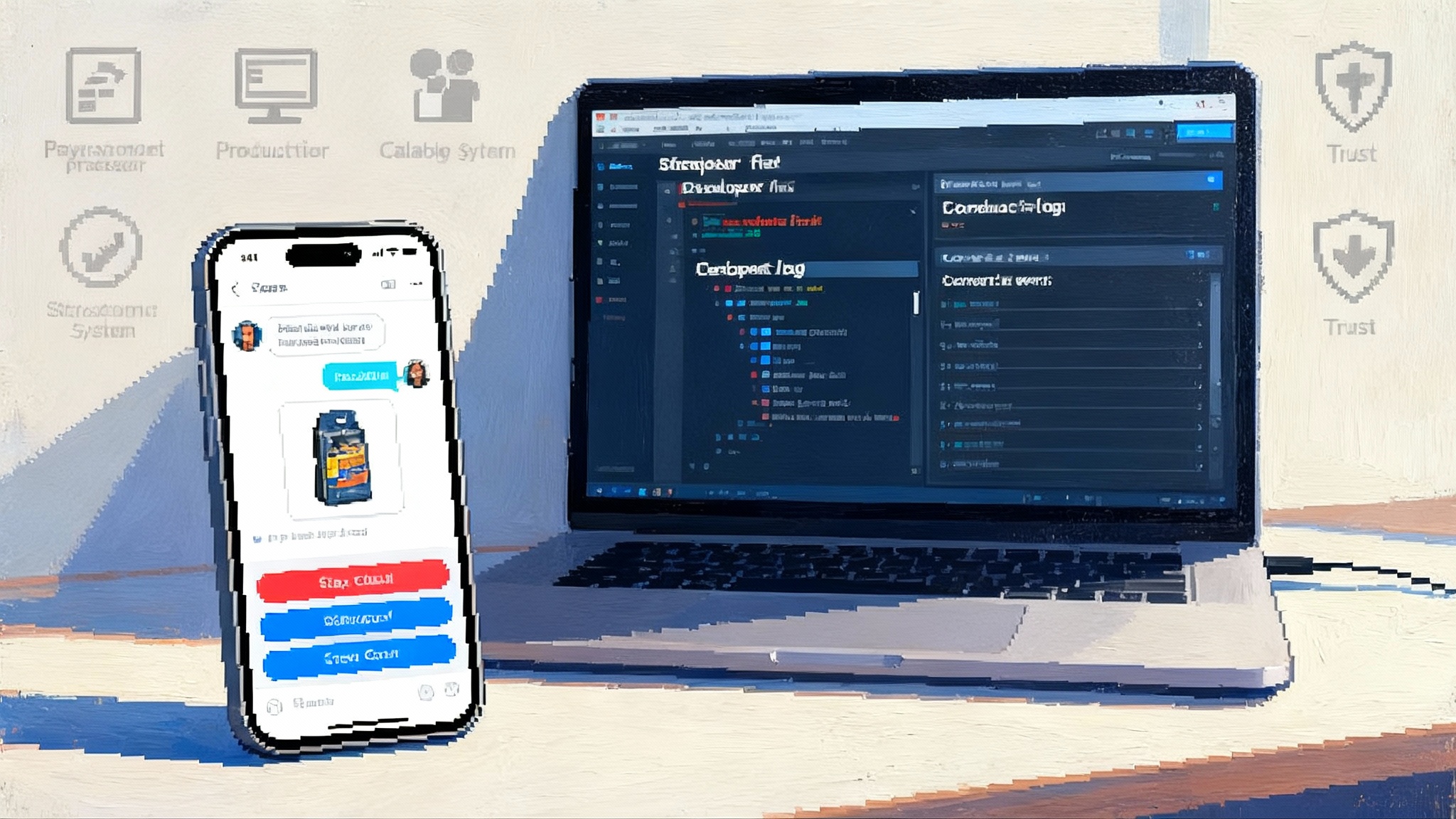Perplexity’s $200 Email Agent Brings Accountable Autonomy
Perplexity just moved from talk to task with an email agent that works inside Gmail and Outlook. It drafts, files, schedules, and acts under policy. Here is how accountable autonomy in the inbox changes the game.

Breaking: an inbox-native doer is now live
Perplexity has crossed a line that many teams have been approaching all year. It moved from talk to task. The company’s new email agent, available to Max subscribers at 200 dollars per month, connects directly to Gmail and Outlook and performs work inside your inbox. Not suggestions, not copy and paste drafts, but actual actions that touch messages, calendars, and contacts. For years we have tolerated chatbots that summarize threads or propose replies. Now there is a doer that files, drafts, schedules, and executes.
If you build agents, you know what that implies. The ceiling on value leaps when software is allowed to touch the object of work. Email remains the universal object in business. Project approvals, travel itineraries, receipts, contracts, scheduling, recruiting, customer support, sales handoffs, partner updates. They begin and end in the inbox. A system that understands those objects and can safely act on them is not a toy. It is a workflow.
Why this is different from chatbots
Chatbots live adjacent to work. They sit in a separate tab, talk about your messages, and hand you text. That is useful, yet it introduces friction and context switching. An inbox-native agent collapses the distance between intent and outcome. The closest analogy is the shift from a GPS that tells you where to go to adaptive cruise control that actually handles the highway and taps your shoulder when it needs help at the off ramp.
Three differences define the shift:
- Object authority: the agent can create, update, and organize mail objects and related calendar entries, not just describe them.
- Event loop: the agent runs routines across time, not only in response to a user prompt. It can watch new mail, hold state, and continue a process until it finishes or fails.
- Accountability surface: because it acts, it must log who did what and when, explain why, and let users undo or refine.
We have seen elements of this in other categories where agents operate next to systems that hold the actual objects. For example, coding copilots gained power once they could orchestrate the browser and file system. Our piece on Cursor browser hooks inflection charted that step change for developer agents. In email the same pattern applies, only the stakes are higher because the object is a living conversation with customers and partners.
What accountable autonomy looks like in email
Accountable autonomy is the core idea. We want decisive action when the agent is confident, and we want clear receipts when humans need to inspect. Inside email, accountability looks specific:
- Scopes that match tasks: read only for triage, compose only for drafting, restricted calendar write access for scheduling, and least privilege by default.
- Human in the loop gates: high impact actions such as sending an external message or accepting a new vendor contract require a confirm step, while low risk actions like labeling or snoozing can auto approve under a policy.
- Receipts and rollbacks: every action gets an entry in an activity log, with a one click revert when supported by the provider. If a meeting invite was accepted, the agent should leave a comment trail that explains why, plus a link to revert or propose alternatives.
- Thread aware memory: the agent must respect the implicit social context of threads. Replying all, dropping recipients, or shifting tone during a vendor negotiation is a social failure, not just a technical one.
That final point is where vertical specialization matters. A general chat interface cannot know your account’s norms, but an inbox agent sees the same cues you do: subject prefixes, company footer language, legal disclaimers, sender roles, and historical outcomes.
Safety first: actioning with guardrails
The hardest part of an inbox agent is not drafting English. It is making safe changes in a messy, adversarial environment. Attackers already exploit human assistants with fake invoices and spear phishing. An autonomous agent increases the attack surface, so builders must exceed the norms of typical consumer software.
Start with permissions. Use provider scopes that are granular and revocable, and avoid the everything bucket that asks for full mailbox access when you only need labels or drafts. Map each user visible feature to a discrete set of scopes so customers can reason about risk. If your agent can modify calendars, offer a policy that restricts changes to events the user owns. The least privilege mindset is not optional. If you need a primer, review the Gmail API OAuth scopes and the Microsoft Graph permissions reference for mail and calendar.
Second, implement policy driven action gates. Create a rules engine that evaluates an action request against conditions: sender trust score, domain allowlist, dollar amount in the thread, presence of sensitive terms, time of day, and whether the thread includes legal or finance distribution lists. Flag high risk combinations for review and allow admins to tune thresholds per team.
Third, defend the model from prompt injection carried by email. Treat the thread body as untrusted input. Strip or neutralize instructions embedded in quoted text and signatures. Segment retrieval so the agent never mixes unrelated threads in a single context window, and bias the system to prefer structured metadata over freeform instructions when deciding what to do.
Fourth, run everything through a dry run simulator. Before the agent takes an action, have it render a plan that states inputs, steps, and expected effects. Validate that plan against a policy engine and a set of canary rules. For example, if the plan would email banking details to a domain that has never appeared in the customer’s history, block and ask.
Finally, rate limit and queue. Even correct agents can create denial of service incidents by mass labeling or auto replying to a flood. Introduce backpressure, exponential backoff, and budgeted daily action counts. Show remaining budgets so users understand why the agent pauses.
For builders who want to compress the stack required to ship guarded actioning, compare playbook ideas from AgentKit compresses the stack. The lesson holds: guardrails should be first class primitives, not afterthoughts.
Inbox grounded retrieval that actually works
Retrieval augmented generation is now table stakes, but the inbox imposes unique constraints. Threads are long, redundant, and full of quoted material. Attachments carry the facts, not the body text. Real inbox grounded retrieval looks like this:
- Thread segmentation: chunk by logical turns and participants, not by characters alone. Identify the latest canonical version of an attachment rather than passing every revision.
- Field aware indexing: index headers, recipients, message ids, and labels as first class fields. Many tasks rely on who wrote what and when, not only what was said.
- Attachment extraction pipelines: parse calendars, invoices, and contracts with specialized extractors. Store the extracted fields alongside the vector index so the agent can reason over structured data when planning.
- Freshness windows: limit retrieval to a sliding window of recent context unless the task requires history. This avoids spurious matches from ancient threads.
- User tunable sources: let users include or exclude folders like Legal or HR. Retrieval should respect both sensitivity and relevance.
If you build this well, you unlock actions that feel magical. The agent can answer, “Did we already sign the updated vendor appendix, and if not, draft the reply that asks for a clean redline?” Or, “Find every flight quote we received for the Tokyo trip, update the price grid, and confirm the best option with the travel lead.” Those are not text generation tricks. They are retrieval and planning working in concert with mail objects.
Evaluations and observability you cannot skip
Any agent that touches mail must ship with an evaluation and observability layer from day one. Do not treat this as a later enterprise feature. It is the product.
- Golden sets: build seed datasets of realistic threads and calendars with known correct outcomes. Include messy cases like forwarded invoices, nested quotes, and language switching. Measure precision and recall for classification tasks and exact match for extraction tasks.
- Synthetic corpora grounded in email: generate realistic but safe test mailboxes that mimic your target customers, with vendors, receipts, and internal politics. Let these mailboxes receive live newsletters and transactional mail so your agent learns to ignore noise.
- Canary accounts: run the agent against internal canary mailboxes with aggressive alerting. Every failure is a lesson, and a failure that hits a safe canary saved a user from pain.
- Policy coverage reports: surface which policies blocked which actions and why. This helps customers tune sensitivity, and it helps you find blind spots in your rules.
- Human trace review: record the model’s chain of thought as structured steps without storing sensitive content, then expose readable traces that say, “I labeled this Finance because the sender is billing@example.com and the body contains invoice and wire.” Traces are the difference between trust and mysticism.
On the observability side, treat the agent like a small distributed system. Provide per user dashboards for action counts, queue health, error rates by provider, and time to completion per workflow. Offer audit logs with identity, model version, policy rules fired, and the exact provider responses received. Give admins an export that satisfies compliance teams, including retention and deletion schedules.
We have seen similar discipline emerge in high risk automation domains. Our look at autonomous pentesting going live showed why traceability and hard limits separate safe automation from chaos. Email deserves the same rigor because the blast radius is reputation, revenue, and relationships.
Pricing the vertical agent
Perplexity’s decision to attach the email agent to a 200 dollar per month Max plan is a signal. Vertical agents that do real work will be priced like software that moves money and time, not like novelty chat. The value is not in word count. The value is in completed actions and avoided mistakes.
For builders, the pricing math is straightforward. Start with a concrete daily workflow and assign a clear per action value. Scheduling a meeting that would have taken six minutes is worth a few dollars. Processing a vendor invoice with correct coding is worth more. Multiply by frequency and you arrive at a monthly willingness to pay that beats generic chat.
Consider a three tier model:
- Starter: read, label, summarize, and draft within quotas. Priced per seat for individuals and very small teams. No autonomous send, no calendar write.
- Professional: adds safe actioning with approval policies, priority queues, and attachment extraction. Priced per seat with an action budget. Overages priced per hundred actions.
- Max or Enterprise: full autonomy under policy, advanced audit exports, model selection, fine tuned retrieval, and premium support. Priced per user or as a pooled concurrency license, with minimums.
Avoid unlimited promises. Offer credits that map to costly operations like provider calls and attachment parsing. Tie service level agreements to queue times and failure budgets, not to vague notions of intelligence. If you charge a premium, include real enterprise controls: single sign on, scoped OAuth clients, retention options, and a break glass mode that shuts the agent off instantly.
What builders should ship next
If you plan to compete in this vertical agent moment, prioritize these deliverables.
- Safe actioning as a product, not a feature: design an action policy engine with templates for common roles. Sales can auto respond to inbound leads and schedule calls within office hours. Finance can file invoices to a label and send a receipt acknowledgment, but never change payment details without approval.
- Inbox grounded RAG that respects structure: index by thread, attachment, and header fields. Build custom extractors for invoices, purchase orders, resumes, and travel confirmations. Offer transparent source attributions in every action plan, even when you do not show full content for privacy.
- Cold start profiling: learn tone and preferences by sampling sent mail and calendar history under consent. Store a lightweight style profile. Use it to generate replies that sound like the user without copying signature quirks that cause problems, like reply all tendencies.
- Evaluations with a living benchmark: publish a scorecard that updates weekly. Include success rates by action type, false positive and false negative rates for sensitive classifications like fraud and legal risk, and a list of top failing patterns you are fixing next.
- Observability for humans: ship a command center. Show upcoming actions, pending approvals, top sources of friction, and a digest of completed work with links to messages and invites. Let users correct the agent from the digest and feed those corrections into learning.
- Provider aware behaviors: Gmail and Outlook differ. Implement adapters that honor each provider’s rate limits, draft semantics, and label or folder models. Test bounces, alias handling, and shared mailbox edge cases.
- A refusal culture: teach the agent to say no. If it is not confident about sender identity, or if the thread contains conflicting instructions, the correct action is to pause and ask.
If you need a mental model for scoping and scaffolding, revisit how platform primitives can reduce time to ship in AgentKit compresses the stack. The same approach helps you concentrate on action policies and retrieval quality rather than reinventing infrastructure.
Risks and failure modes to watch
Inbox agents fail in predictable ways. Prepare for them.
- Thread leakage: the agent includes an internal comment or a third party thread in a reply. Mitigation: strict scoping, recipient checks, and soft prompts that bias toward replying only within the current thread and participants.
- Over automation: too many auto replies create noise or damage relationships. Mitigation: caps per recipient per week and watchlists for strategic contacts who always require human approval.
- Calendar chaos: double bookings or wrong time zones. Mitigation: always propose two slots, confirm the time zone, and validate location fields before adding attendees.
- Vendor fraud: the agent acts on a fake invoice or bank change request. Mitigation: domain reputation checks, historical vendor profiles, and policies that block financial changes without human confirmation.
- Privacy drift: logs or traces accidentally store sensitive content longer than promised. Mitigation: strict retention policies, redaction at ingest, and periodic self audits.
The best teams treat each failure as a test case to be folded back into policy and retrieval. When a false positive auto labels a legal thread as marketing, the response is not to turn off the agent. The response is to add a rule, update the extractor, and expand the golden set.
The bigger shift: vertical agents become the interface
When an agent sits inside a channel that already organizes the world’s work, the interface changes. Users stop asking, “What can AI do?” and start saying, “Please take care of this thread, and ping me if you need me.” That is a new contract. Software becomes a colleague with limited authority, measurable results, and an audit trail.
The competitive field is clear. Large platforms will integrate assistants inside their suites, but focused companies can win by going deeper in one job. Email is an ideal beachhead because it is where decisions and documents converge. An agent that proves reliability in the inbox will earn the right to handle the next adjacent task: filing signed contracts to storage, opening tickets, updating a customer record, reconciling receipts after a trip.
If you are choosing where to invest, choose the place where users already live. Meet them in the inbox. Understand the calendar. Respect the address book. Build the habit loop: see the agent’s morning digest, approve a few actions, and watch a measurable slice of work disappear.
Conclusion: the new contract with our inboxes
Perplexity’s 200 dollar email agent will be remembered less for its price and more for its posture. It treats the inbox as a system the agent is responsible for, not a text file to summarize. That is accountable autonomy. Builders who match that posture, and who ship safe actioning, inbox grounded retrieval, rigorous evaluations, clear observability, and pricing that reflects real value, will define how work happens in the next wave. The inbox will not only be cleared. It will be cared for, with receipts, policies, and a human always in the loop when it matters most.







